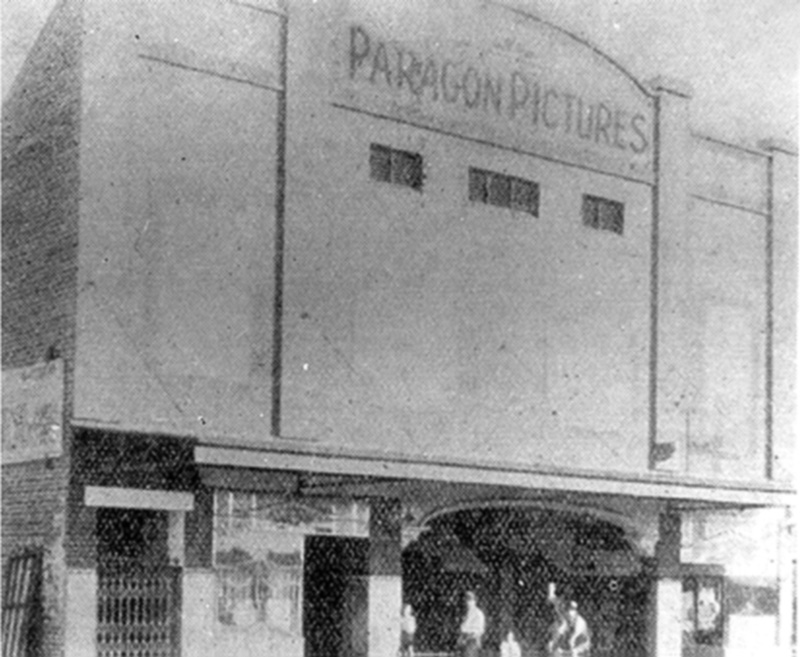Canterbury League Club first officially opened its doors for trade on 6 June 1957 to service the needs of the football club and local community. The first site was on 7 Collins Street in Belmore on land which used to house an old Salvation Army hall. The small hall was eventually replaced four months later by a repurposed naval depot building which became the first venue of the Canterbury League Club. The Club was led by Chairman Frank Stewart and Secretary Ken Charlton, and had an initial membership base of 292 members with a great number on the waiting list.

The first Canterbury League Club at Collins St. The naval depot building was a large wooden structure that was originally located in Rushcutters Bay. Members and volunteers banded together to dismantle, transport and re-assemble the building in Belmore on the weekends until it was finally completed.

The former Paragon 1 Theatre on Bridge Street which opened on 19 March 1924. The last movie was shown on 28 November 1958.
In the first two years of trade the Club quickly outgrew itself and the Board set their sights on finding new premises. At the same time, Paragon 1 Theatre behind the Club was closing down due to reduced trade so the Board acted immediately to offer £17,000 for the building which was accepted. After several long months of renovation to remodel the theatre, the new Canterbury League Club was opened on 12 April 1960. The larger premises allowed the Club to accommodate for their increased membership as well as cater for patron parking.

The renovations on Paragon 1 Theatre to turn it into Canterbury League Club cost £50,000.
During the 90s Canterbury managed one of the most successful League Clubs in NSW and was quickly becoming known as one of the most progressive leisure facilities in Australia. With trade booming and patronage at an all-time high, the Club extended its trading to 24 hour trading.
The next major expansion program to prepare Canterbury for a new century started in mid 1999 with work beginning on an external volcano water feature and outdoor landscaping which has become the iconic symbol of the Club. The volcano feature, which was completed at the end of 2000, was just the start of the ambitious program which also included a completely revamped foyer with a large jungle atrium and external glass lift, a new 400 seat bistro and a new Chinese restaurant called The Dynasty.
In 2005 redevelopment started again to reenergise the Northern end of the Club and complete a total makeover of the “old club’s” ground floor following the opening of the new wing three years prior. The former upstairs auditorium was renovated into a new function space and the old main bar and coffee shop was transformed into a spacious health club to cope with rising membership numbers. This renovation, which was completed at the end of 2007, gave us the current Paragon Room, C-Life Health Club, Bulldogs Sports Bar, Terrace Bar and Lavico restaurant that patrons see now.
The most recent development started at the end of 2014 and is continuing – a redevelopment to the tune of approximately $130 million. This round of renovations has so far offered Members two new restaurants – Bakehouse Café and The Bistro – and set the foundation to future proof the Club including building new basement production kitchens and a multistorey underground car park at the front of the Club.
The Club also amalgamated with Lakemba Services Memorial Club (2001), now known as The Lakemba Club & Canterbury Bankstown Tennis & Bowls Club (2016), now known as Moxon Sports Club.
Canterbury League Club has since become one of Sydney’s premier hospitality destinations with 5 star amenities including 4 restaurants, multiple bars and entertainment lounges and a 24 hour health club.